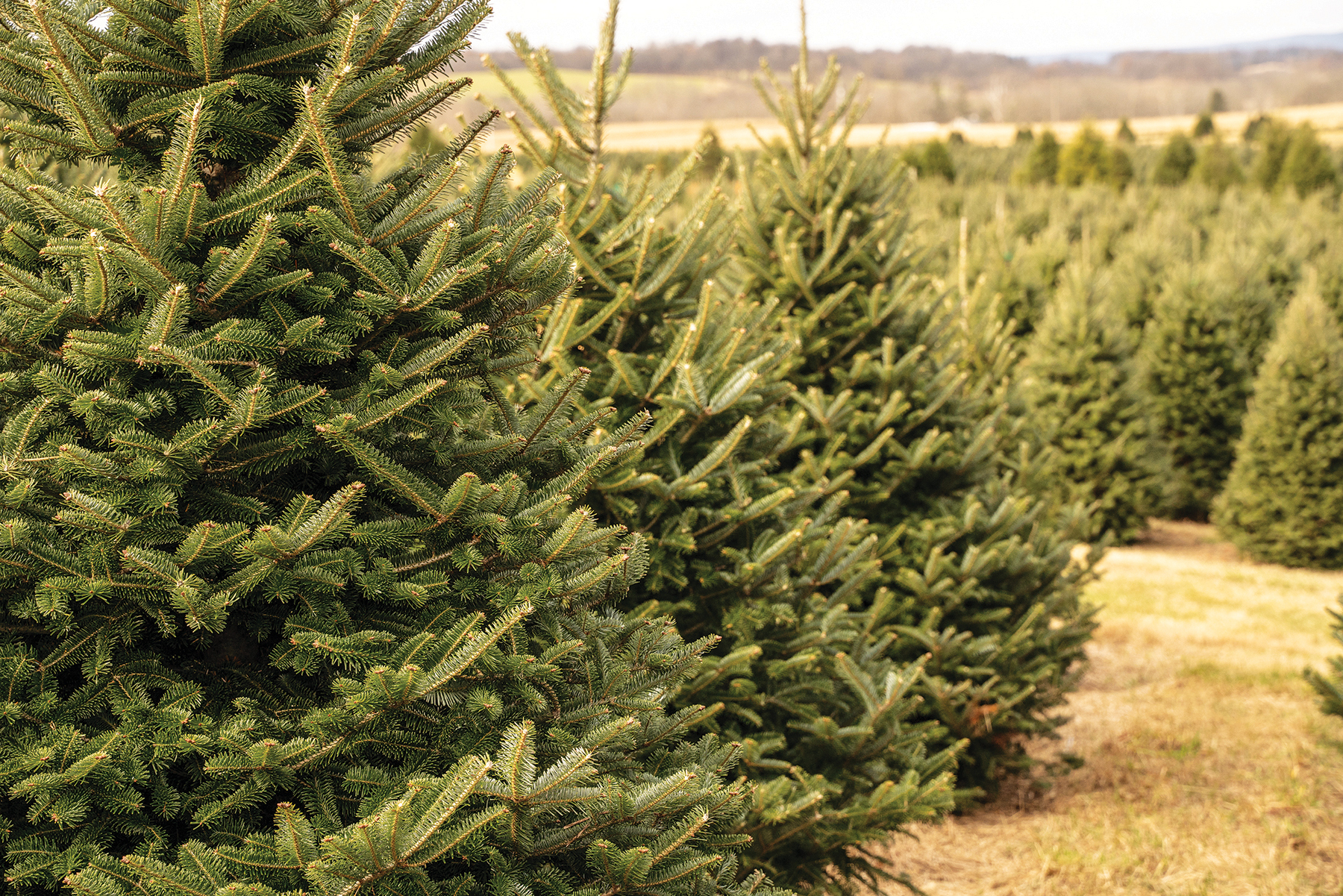Christmas Tree Q&A
Expert Advice On How To Pick And Care For The Perfect Real Christmas Tree

For generations, Christmas trees have symbolized the joy of the holiday season. There’s something so special and heartwarming about the fresh scent of a real tree wafting through the house during the holiday season, and the feel of the real branches as you hang up memory-filled ornaments. So it only makes sense to provide your cut tree with proper care to keep its magic going right on into the New Year.
Our friends at the NC Christmas Tree Association shared some of their most frequently asked questions that are sure to help you pick the perfect Christmas tree and keep it thriving all season long.
Q: I see cut Christmas trees being hauled on the highway as early as October. How early do most farmers cut their trees?
A: The first cutting date varies, depending on how early we get a good frost. In general, Christmas trees are not cut before the first week of November, and most are cut very close to Thanksgiving. To be sure that you get a fresh tree, perform a simple freshness test by gently grasping a branch between your thumb and forefinger and pulling it toward you. Very few needles should come off in your hand.
Q: Is it okay to buy a tree that is losing its needles?
A: Some dropping of older, interior needles is natural and normal. However, if the overall color is faded, the bark of the outer twigs is wrinkled, and the green, exterior needles easily fall off at a gentle touch or when the tree is bounced on a hard surface, it is excessively dry. Select a different one.
Q: Is a fresh cut really necessary before putting a tree in a stand?
A: Always make a fresh cut if possible (only one-half inch is necessary, not one or two inches as is sometimes instructed). After time, generally three to six hours, the cut stump gets air in the plant tissue, which lessens a tree’s water absorption capacity. A fresh cut will reopen the pores that take up water.
Q: Will tapering the base or cutting it an angle increase the area that takes up water?
A: No. This reduces the surface area of plant tissue that absorbs water molecules. Once the water level falls below the exposed surface on a tapered trunk, drying will begin. An angle or “V” cut will require more water depth to cover the cut surface. It also makes the tree more difficult to hold upright in a stand and less stable.
Q: Should I add bleach, aspirin, fertilizer, or other things to the water to make my tree last longer?
A: No! Research has shown that plain tap water is best. Some commercial additives and home concoctions can be detrimental to a tree’s moisture retention and increase needle loss. Water holding stands that are kept filled with plain water will extend the freshness of trees for weeks.
Q: How large should my water stand be?
A: Choosing a large capacity stand is one of the most important steps to maintaining your tree’s freshness. Avoid small “coffee cup” stands. Check the water level frequently since trees can drink large amounts of water each day, particularly pre-cut trees during the first week of display. Generally, a tree can use up to one quart of water per day for each inch of stem diameter. Therefore, a stand that will hold a four-inch trunk should hold at least one gallon (four quarts) of water with the tree in the stand.
Q: What kind of tree stand should I use?
A: There are several different types and styles of trees stands from which to choose. The most important characteristic is water capacity. You should also make sure the stand “fits” the tree – if it is too big or too small, it might cause the tree to tip over. Do NOT trim the sides of the trunk to fit it in a stand.
Q: What if my tree doesn’t seem to be absorbing water?
A: If you’ve followed all the care tips, there are a couple of things to consider. First, if you cut your own tree at a choose and cut farm, it will not absorb water right away since it hasn’t had time to begin drying out. Second, the best indicator of dryness is the tree itself, not the water level in the stand. The rate of water absorption will fluctuate from day to day. This is normal.
Q: What if I forgot to make a fresh cut off the base of the tree before setting it up?
A: If a fresh cut was not made, the tree will still take up water, but at a reduced rate. Hot tap water in the tree stand increases water uptake in some trees. If you’re still concerned, do a freshness test every few days and continue to add water.
Q: Isn’t it bad for the environment to cut down a tree and use it for Christmas?
A: It is much better environmentally to use a natural agricultural crop and recycle it after the holidays. Real Christmas trees are a renewable, recyclable, natural product grown on farms throughout North America. Unfortunately, many people have the misconception that Christmas trees are cut down from the forest. Real Christmas trees are grown as crops, just like corn or wheat, and raised on a farm. Once they are harvested, new seedlings are planted to replace harvested trees. These would not have been planted if trees hadn’t been harvested the previous year. Fake Christmas trees, however, are a non-renewable, non-biodegradable, plastic and metal product.
Special thanks to the NC Christmas Tree Association (ncchristmastrees.com) for their tree selection and care tips and advice.

